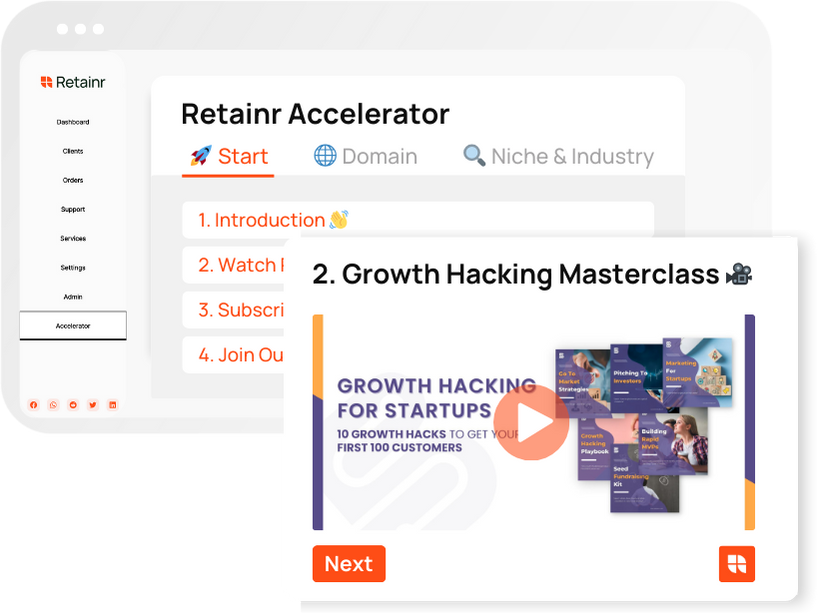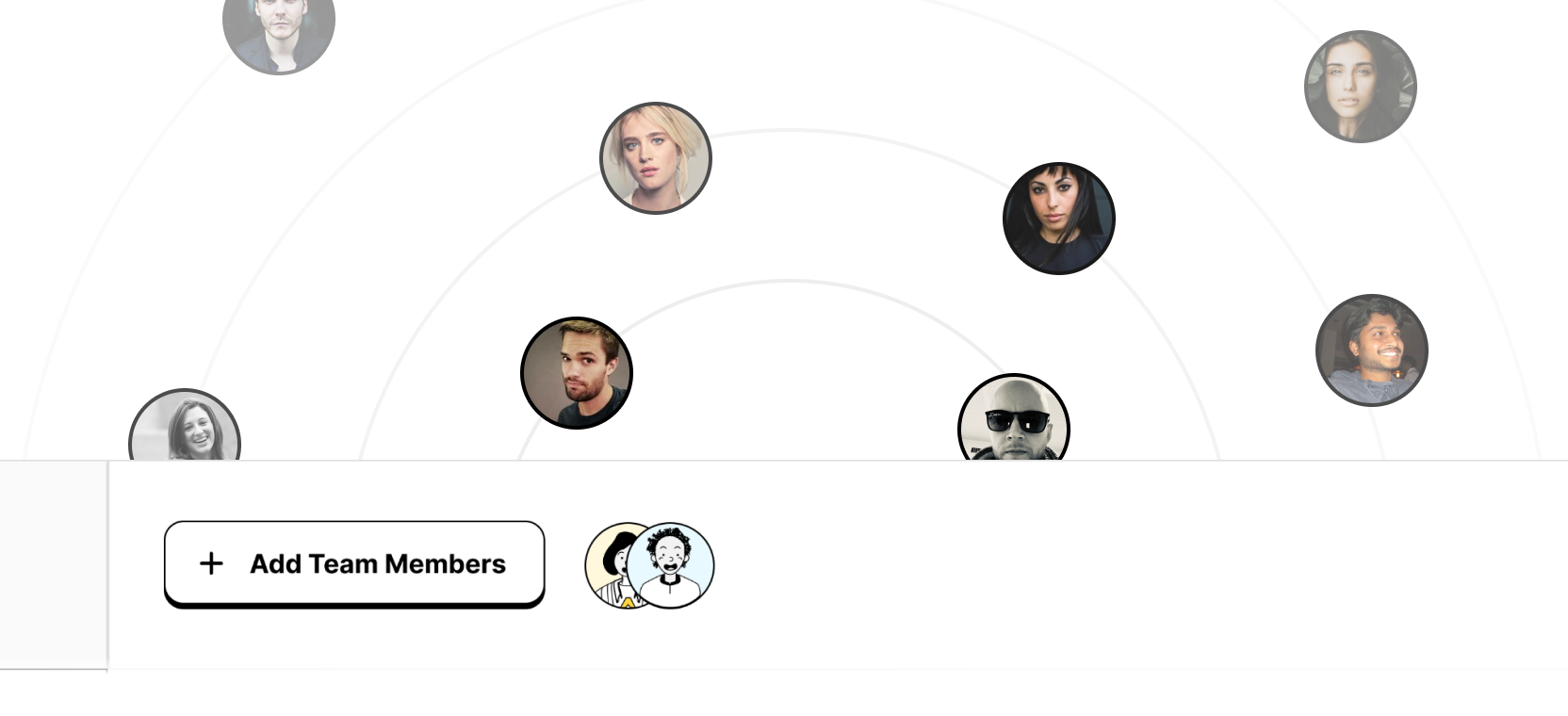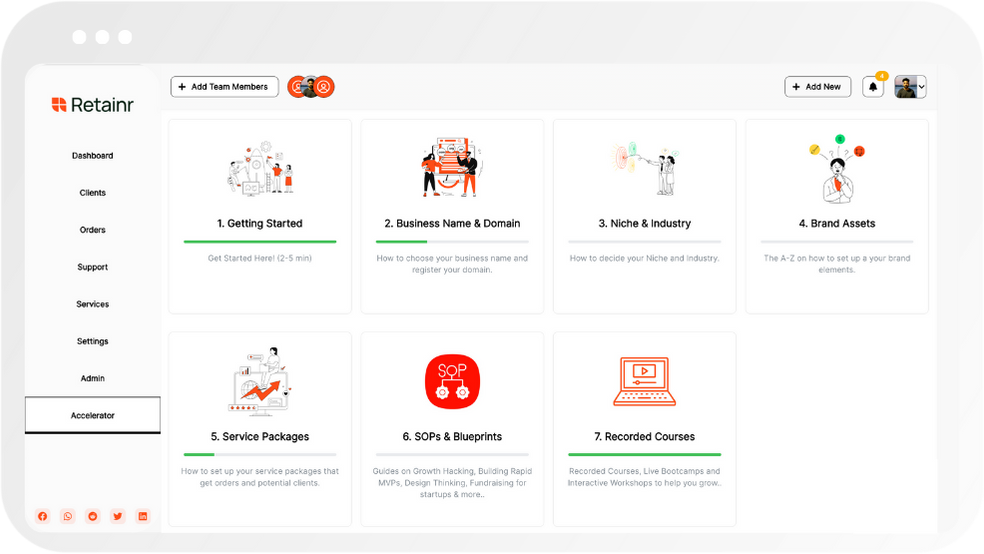
7 Trends Redefining the Role of Leadership in Business
Build with Retainr
Sell your products and services, manage clients, orders, payments, automate your client onboarding and management with your own branded web application.
Get Started1. What are the seven trends redefining the role of leadership in business?
Leadership Role Transformation - The Main Trends
The dynamics of the modern business environment are constantly changing, resulting in a shift in the traditional view of leadership roles. From an authoritative model to a more collaborative one, the specific styles and responsibilities of leaders are evolving and being reshaped. Seven significant trends are currently redefining the role of leadership in business:
- Embracing Diversity and Inclusion: Leaders are now fostering cultures that appreciate differences and leverage them for growth.
- Adoption of Digital Technology: Digital transformation has become an essential aspect of decision making.
- Emphasis on Sustainability: Leaders recognize the need for sustainable decision making that balances profits with societal and environmental impacts.
- Work from Home Orientation: The COVID-19 pandemic has accelerated the shift to remote operations, and it has altered the leadership role and its dynamics.
- Increased Focus on Ethics: Companies emphasize value-based leadership in response to increasingly conscious consumers and workforce.
- The Prominence of Emotional Intelligence: Emotional intelligence has taken centre stage for leaders who aim to build strong relationships within their teams.
- Reevaluating Employee Wellbeing: The pandemic has also prompted a shift in focus towards the holistic wellbeing of employees - physical, emotional, and mental.
Leadership Trends - Comparative Analysis
Each trend brings its own sets of challenges and opportunities for leaders. It is critical to understand their impacts on business operations, culture, performance, and bottom lines. Below table provides a brief comparative analysis of these key leadership trends:
| Trend | Impacts | Typical Leader Response |
|---|---|---|
| Diversity and Inclusion | Increased creativity and innovation | Foster an inclusive environment |
| Digital Technology | Increased efficiency, speed to market | Upgrade technology stack, build digital skills |
| Sustainability | Long-term business resilience | Integrate sustainability with business strategy, redefine business goals |
2. How is the role of leadership changing in the light of current business trends?
Evolution of Leadership Roles in Current Business Trends
The business landscape's current shifts are drastically changing the role of leadership. Today, leaders are not just tasked with directing employees and setting company goals. They are increasingly expected to be visionaries, agents of change, and promoters of company culture. This change is championed by several new trends:
- Remote Work: With the upsurge of remote work due to the Covid-19 pandemic, leaders are now challenged to manage and motivate teams virtually.
- Increased Diversity and Inclusion: Today's leaders need to foster environments that appreciate individual differences.
- Sustainability: Modern leaders should actively contribute to planetary preservation.
Impact of Decentralized Decision Making and Technological Integration
Another two trends playing a significant role in remodeling leadership in business are decentralized decision-making and integration of advanced technology. Employees are empowered to contribute more substantially through decentralized decision-making, demanding leaders facilitate collaboration and communication. On the other hand, technological advancements require leaders to embrace digital transformation and promote digital literacy.
| Trends | Impacts on Leadership |
|---|---|
| Decentralized decision-making | Leaders are facilitators of collaboration and communication. |
| Integration of technology | Leaders must embrace digital transformation and promote digital literacy. |
Emotional Intelligence and Constant Learning as Leadership Obligations
The final trends reshaping leadership are the emphasis on emotional intelligence and the requirement for constant learning. Modern leaders need to be emotionally intelligent to better understand, value, and integrate employee feelings and perspectives in the workplace. Constant learning, on the other hand, ensures that leaders evolve with industry developments and equip their teams with the necessary skills for future business challenges.
| Trends | Impacts on Leadership |
|---|---|
| Emphasis on emotional intelligence | Leaders should be emotionally intelligent to value and integrate diverse employee perspectives. |
| Constant learning | Leaders should continuously learn to equip their teams with the necessary skills for future business challenges. |
3. How can understanding these seven trends help improve my leadership skills?
Understanding the Seven Trends
Understanding these seven trends can significantly improve your leadership skills in several ways. Firstly, awareness of these trends allows leaders to align their strategies and objectives with current business realities and adapt accordingly, ensuring their organization remains competitive. Secondly, understanding these patterns also enhances the leader's ability to influence others, as they will be better equipped to explain the reasons behind certain decisions. Thirdly, these insights can guide leaders in increasing their focus on areas such as sustainability, diversity, and technological advancement, which are increasingly important in today's business world.
Improvement Areas in Leadership
- Adaptability: Leaders can improve their adaptability skills by better understanding the ever-changing business landscape. By staying updated with the latest trends, they can prepare for changes and lead their team through transitions.
- Influence: Being aware of the current trends in leadership helps leaders improvise their influencing skills as they can use data-driven solutions to increase buy-in and improve decision-making processes.
- Focus on Crucial Aspects: Today, leadership is not just about managing a team. It is more about promoting sustainable practices, fostering diversity, inclusivity, creativity, and innovation. So, learning about these trends will let leaders focus on these crucial aspects too.
Application of Trends in Leadership Enhancement
| Trend | Impact on Leadership Skills |
|---|---|
| Remote Work | Enhances the leader's ability to manage teams virtually and understand employees' needs in a remote working environment. |
| Digital Transformation | Helps leaders adopt the latest technologies and digital tools to improve operational efficiency. |
| Increased focus on Diversity and Inclusion | Leaders learn to value and encourage diversity, fostering an inclusive workplace culture. |
| Sustainability and Corporate Social Responsibility | Leaders become aware of their role in promoting sustainable practices and contributing to societal wellbeing. |
4. Can you provide examples of businesses that have adapted to these seven trends?
Businesses Reflecting New Leadership Trends
Several businesses show adaptation towards the new leadership trends seen across sectors, including those like embracing digital transformation, increased focus on employee well-being, prioritizing diversity, promoting transparency, fostering innovation, encouraging remote work, and practicing sustainability.
A great example is Google. The technology giant has been consistent in embracing digital transformation, promoting transparency, and fostering innovation. Its unique "20% time" policy encourages employees to spend 20% of their work time on passion projects, supporting innovation. Furthermore, Google's numerous platforms, like Google Alerts and Google Trends, provide transparent insight into world data.
| Company | Trend |
|---|---|
| Microsoft | Digital Transformation, Remote Work |
| IBM | Innovation, Transparency |
| Unilever | Sustainability, Diversity |
Other examples include Microsoft and IBM. Microsoft's adaptation to the remote work trend during the COVID-19 pandemic is well noted, as they announced a permanent flexible work from home policy. IBM has several initiatives for promoting transparency, like the IBM Policy Lab, and is known for its continual innovation. Unilever, a consumer goods giant, has pledged to achieve net-zero emissions across its product lifecycle by 2039, emphasizing its commitment to sustainability. Furthermore, their "Unstereotype" initiative seeks to eradicate harmful stereotypes from their global advertising, supporting the diversity trend.
5. How does the trend of increased transparency impact leadership roles in business?
Increased transparency in companies
With the rise of social media, organizations have been thrust into the limelight, making transparency a crucial leadership trait. While maintaining business integrity, leaders are responsible for creating an environment that promotes transparency. This often entails disseminating information to team members and stakeholders in a clear, concise, and timely way.
- Team Engagement: A transparent work environment encourages active participation and honest feedback from team members. Team members will feel valued, leading to increased productivity and job satisfaction.
- Improved Decision Making: Informed decisions can be made more swiftly and effectively if pertinent information is made readily available.
- Trust Building: When leaders are transparent, they build trust with their team members and stakeholders, fostering a work environment that encourages commitment and loyalty.
Leadership roles in embracing transparency
The trend of increased transparency in business requires leaders to assume new roles and adapt their style of leadership. They need to accurately manage information, encourage open communication, and ensure that this culture of transparency permeates throughout the entire organization.
| Role | Description |
|---|---|
| Information Manager | Ensure company information is accurate, up-to-date, and readily available to those who need it. |
| Communication Facilitator | Encourage open lines of communication amongst team members and between various levels of the organization. |
| Culture Builder | Instill a culture of transparency, promoting honesty and openness in all interactions. |
Transparency: An evolving trend in leadership
Increased transparency in leadership, although complex and demanding, is a trend that brings numerous benefits to businesses. As this trend continues to mature, leaders who embrace transparency will notice improved teamwork, enhanced decision-making ability, and a more trusting and committed workforce. Therefore, it is paramount for leaders to keep abreast of this trend and embed it in their leadership practices.
6. In the context of the seven trends, how is digital technology influencing leadership?
Digital Technology and Leadership
Digital technology is increasingly influencing leadership roles in numerous ways. A comprehensive understanding of digital trends and tools is essential for today's leaders to strategically guide their organizations towards success. High-level digital competency enables leaders to redefine their business models, reshape organizational culture, and drive digital transformation initiatives.
- Data-Driven Decisions: By leveraging analytics, leaders can make informed business decisions. Advanced technologies such as Big Data and AI provide comprehensive insights to support strategic planning and decision-making.
- Virtual Collaboration: Digital tools facilitate effective team collaboration across geographical boundaries. Leaders can utilize platforms like Zoom, MS Teams, Google Meet for virtual meetings, project management, and workflow management. This cultivates a remote-friendly, inclusive work culture.
- Digital Literacy Skills: Leaders are required to be conversant in digital tools and technologies. This doesn't mean they need to be technical experts, but they are expected to grasp the strategic benefits of technologies and how to leverage them for business growth.
Table: Impact of Digital Technology on Leadership
| Trend | Leadership Impact |
|---|---|
| Data-Driven Decisions | Improved strategic planning and informed business decisions |
| Virtual Collaboration | Enhanced team collaboration, remote-friendly culture |
| Digital Literacy Skills | Effective utilization of digital tools, business growth |
Overall, digital technology breeds a more agile, flexible, and innovative leadership model. Leaders equipped with digital competencies can better comprehend market trends, adapt to changes, and create resilient strategies. This progressiveness can directly influence business profitability, sustain competitive advantage, and aid in surviving unpredictable market dynamics.
7. How are the seven trends affecting the decision-making process in leadership?
Trend Impact on Decision-Making Process
The seven trends redefining the role of leadership have impacted significantly on the decision-making process. Building sustainable businesses, digital dominance, transparency and authentic leadership, the shift from profit to purpose, the rise of remote work cultures, the emphasis on diversity and inclusion, and the importance of continuous learning have collectively transformed leaders' approach to making decisions. These decisions now need to account for a much wider variety of factors, influences and potential impacts.
The Breakdown: Trend by Trend
- Building sustainable businesses: Leaders are required to make decisions with a long-term perspective, considering the impact on the environment and society.
- Digital dominance: Strategic decisions need to be data-driven, making use of advanced analytics and AI.
- Transparency and authentic leadership: Leaders need to cultivate an open culture where feedback can be given and received to facilitate better decision making.
- Shift from profit to purpose: Decisions should align with the company’s purpose, with the objective of adding long-term value rather than short-term profit.
- Rise of remote work cultures: Decisions about resource allocation, team coordination, and work-life balance must be taken into account.
- Emphasis on diversity and inclusion: Decision making processes need to involve diverse voices to ensure fair representation and avoid bias.
- Importance of continuous learning: Leaders need to assimilate new information and skills into their decision making.
Table Overview
| Trends | Leadership Impact |
|---|---|
| Building sustainable businesses | Long-term, socially responsible decisions |
| Digital dominance | Data-driven decisions |
| Transparency and authentic leadership | Feedback-influenced decisions |
| Shift from profit to purpose | Purpose-aligned decisions |
| Rise of remote work cultures | Work-life balance, resource allocation decisions |
| Emphasis on diversity and inclusion | Diverse, fair representation in decision making |
| Importance of continuous learning | Ability to assimilate new knowledge into decision making |
8. Can one incorporate these seven trends into leadership training programs?
Incorporating the Seven Trends into Leadership Training Programs
All seven trends can certainly be integrated into leadership training programs in order to effectively redefine the role of future leaders. These trends cover broad aspects of leadership and provide a roadmap for the evolution of effective leadership strategies in business. Here are the seven trends:
- Remote Work
- Emergency Preparedness
- Focus on Divisional Power
- Data-Driven Decision Making
- Sustainability Initiative
- Increased Emphasis on EQ
- New Leadership Styles
Leadership training programs that incorporate these seven trends help leaders grow in these areas. They not only prepare leaders for the current challenges but also make them future-ready. Let's explore how each trend can be integrated into training modules:
| Trend | Integration into Training Program |
|---|---|
| Remote Work | Virtual team management techniques and tools. |
| Emergency Preparedness | Scenario-based decision-making exercises. |
| Focus on Divisional Power | Management strategies for decentralized teams. |
| Data-Driven Decision Making | Data analysis and interpretation. |
| Sustainability Initiative | Sustainability Leadership and Management. |
| Increased Emphasis on EQ | Emotional Intelligence workshops. |
| New Leadership Styles | Exposure to various leadership styles such as transformative or servant leadership. |
9. To what extent do these seven trends affect small businesses and start-ups?
Impact on Small Businesses and Start-ups
Small businesses and start-ups are greatly impelled by the evolving trends in leadership to stay competitive in the contemporary market. The seven trends in leadership do not fall short of at least changing the trajectory of small businesses and start-ups.
- Enhancing Transparency: This trend is highly crucial for small businesses as it enforces the trust and loyalty of both employees and clients. It promotes an open work culture and allows for constructive feedback among the team.
- Promoting Inclusivity: Startups can leverage this trend to harness diversity within their teams. The differing perspectives can lead to innovative solutions and products, setting the company apart in the market.
- Prioritizing Sustainability: Small businesses that prioritize environmentally friendly practices not only benefit the planet but also appeal to a broader audience who are passionate about reducing their carbon footprints.
- Fostering Engagement: High levels of engagement in a small team can lead to enhanced productivity and collaboration. The close-knit dynamic of start-ups particularly caters to this trend.
- Remote Work Flexibility: This trend allows small businesses and start-ups to hire talent from anywhere in the world, reducing costs, and increasing accessibility.
- Focus on Emotional Intelligence: The small scale of these businesses requires leaders to have a high level of emotional intelligence to manage their teams effectively.
- Digital Savviness: This improves efficiency and communication for small businesses, enabling them to compete on larger platforms.
Quantitative Extent of Impact
The following table gives a rough percentage estimate of the impact that the seven trends have on small businesses and start-ups.
| Trend | Estimated Impact Percentage |
|---|---|
| Enhancing Transparency | 20% |
| Promoting Inclusivity | 15% |
| Prioritizing Sustainability | 10% |
| Fostering Engagement | 15% |
| Remote Work Flexibility | 20% |
| Focus on Emotional Intelligence | 10% |
| Digital Savviness | 10% |
10. How do these seven trends influence the relationship between leaders and their teams?
The Influence of Trends on Leadership-Team Relationship
Leadership trends are continuously evolving and these changes have a significant influence on the relationship between leaders and their teams. As we look into the seven trends redefining the role of leadership in business, we see that they encourage a more collaborative and inclusive environment.
Effects of Leadership Trends
- Emphasis on Emotional Intelligence: Leaders are now expected to exhibit a high level of emotional intelligence, fostering more trust and openness between them and their teams.
- Digital Transformation: This makes leaders more approachable and accessible, rendering the traditional command-and-control hierarchy obsolete.
- Focus on Diversity and Inclusion: Leaders are expected to create an inclusive workplace where everyone feels valued. This directly correlates with higher job satisfaction among team members.
- Adaptiveness and Learning Agility: Leaders are no longer the sole source of knowledge; they are learners like everyone else in the organization. This cultivates a sense of camaraderie and mutual respect.
- Worker Wellbeing and Happiness: This trend promotes a more empathetic leadership style, positively impacting the leader-team relationship.
Summary Table
| Trend | Effect on Leader-Team Relationship |
|---|---|
| Emphasis on Emotional Intelligence | Enhances trust and openness |
| Digital Transformation | Makes leaders more accessible |
| Focus on Diversity and Inclusion | Boosts job satisfaction |
| Adaptiveness and Learning Agility | Encourages mutual respect and camaraderie |
| Worker Wellbeing and Happiness | Promotes a more empathetic leadership style |
Conclusion
The Evolution of Leadership in Business
Today's business landscape is rapidly evolving, and consequently, so is the role of leadership. In the face of digital transformation, globalisation, and a generational shift in the workforce, here are seven key trends redefining the nature of leadership in the 21st century:
- Placing increased significance on soft skills
- Adopting an inclusive approach
- Investing in continual learning and development
- Embracing flexibility and adaptability
- Promoting a purpose-driven approach
- Taking advantage of technology and data
- Leading by example
These trends highlight the need for leaders to invest in their own personal development and to leverage advanced tools and technology to manage their organisations effectively.
Equip Your Leadership With Retainr.io
At the intersection of these emerging leadership trends is technology. Enabling leaders to make informed decisions, streamline processes and foster stronger client relationships, technology is a crucial component of contemporary leadership. This is where Retainr.io comes in.
Retainr.io is a whitelabel software that provides leaders with the necessary tools to efficiently sell, manage clients, orders, and payments through their own branded app. The platform condenses multiple functionalities into one user-friendly interface, making it simpler for leaders to oversee crucial business areas.
Retainr.io embraces the era of digital leadership by providing a tool designed to adapt to the evolving demands of leadership roles in business. To discover the myriad of ways in which Retainr.io can impact your organisation positively, visit www.retainr.io
Boost Your Agency Growth
with Retainr Accelerator
Uncover secrets, strategies, and exclusive blueprints to take your agency's growth to the next level — from marketing insights to effective presentations and leveraging technology.

SOPs, Cheatsheets & Blueprints
Leverage 50+ SOPs (valued over $10K) offering practical guides, scripts, tools, hacks, templates, and cheat sheets to fast-track your startup's growth.
Connect with fellow entrepreneurs, share experiences, and get expert insights within our exclusive Facebook community.
.jpg)

Join a thriving community of growth hackers. Network, collaborate, and learn from like-minded entrepreneurs on a lifelong journey to success.

Gain expertise with recorded Courses, Live Bootcamps and interactive Workshops on topics like growth hacking, copywriting, no-code funnel building, performance marketing and more, taught by seasoned coaches & industry experts.

.jpg)

.jpeg)


